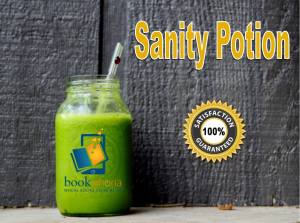Bookphoria’s Magic Sanity Potion for the holidays
 If your holiday season is anything like ours, it is not just “gratitude journals,” “Santas” and “truffles.”
If your holiday season is anything like ours, it is not just “gratitude journals,” “Santas” and “truffles.”
Putting on a couple of pounds, frantically searching for presents, experiencing sudden nostalgia due to the lack of the vitamin D (not because of our Russian origin!), increased cravings for anything chocolate-covered are also a huge part of this season…
How do we deal with all this mess?
Here is our little secret – a special Bookphoria’s Sanity Drink that was created by combining both of our favorite recipes together, resulting in this majestic elixir of youth, slim waists, calmer moods, and glowing skins. And today we are ready to share it with our followers!
Introducing….
Bookphoria’s Magic Sanity Drink Recipe:
Ingredients:
Green apple
Celery 5 stalks large
Ginger root (1/2 thumb)
Carrots 3
Lime 1 (peel the skin off)
Spinach 1 cup
Directions
Process all ingredients in a juicer, shake or stir and serve.
Benefits: The calming properties of celery, lime’s immediate uplifting qualities, carrots’ and apples’ youth benefits, ginger’s magical powers to de-bloat and keep the digestion healthy, and spinach’s alkaline powers will leave you refreshed, slim, glowing, calm and happy!
Please, keep the holiday season fun! Share below YOUR favorite recipe and the winner of the best recipe will get a prize! You can also send us your recipes to: info@bookphoria.com
To make your holidays even more “sane” download the “Ultimate Online Tech Toolbox” that will help you minimize your stress while dealing with technology this season!
Thank you for being a part of our community of passionate and dedicated experts!
Cheers and Happy Thanksgiving!
Click the button below to get your free copy of “Ultimate Online Tech Toolbox” now!

